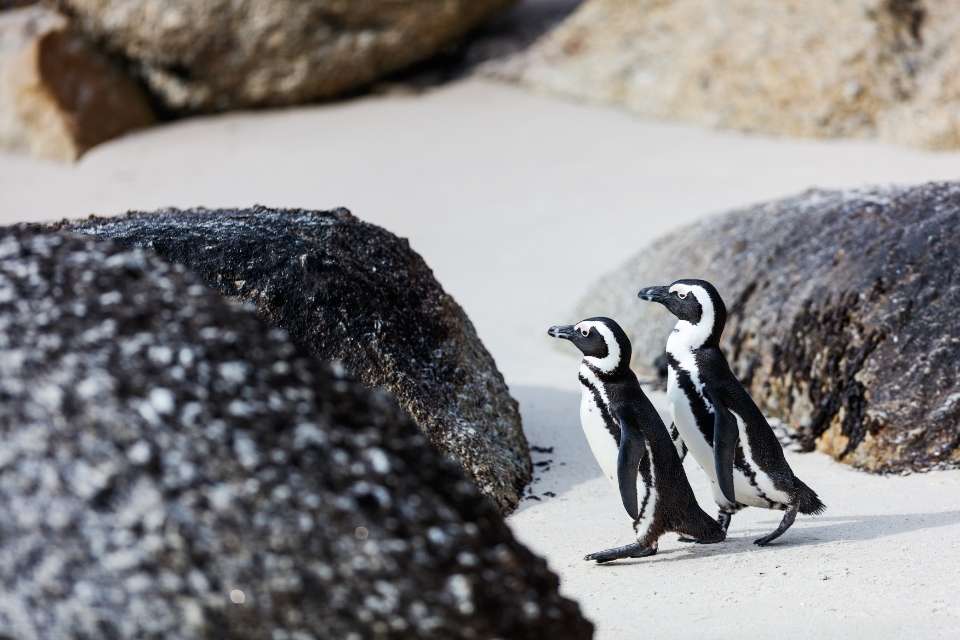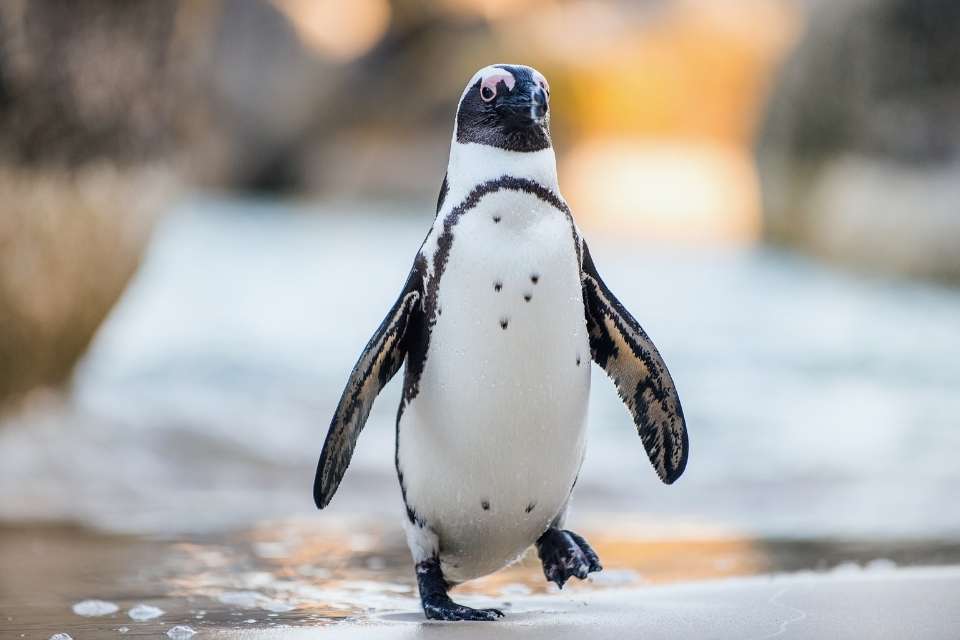Have you ever wondered if penguins build igloos? We’re here to debunk a common misconception and set the record straight. Penguins, those adorable flightless birds that grace us with their waddling and playful antics, do not build igloos.
Penguins do not build igloos as their natural habitats. These fascinating flightless birds are well adapted to survive in icy environments without the need for man-made structures.
To understand why, let’s delve into the world of penguins. There are at least 17 different species of penguins, all of them native to the Southern Hemisphere. These incredible creatures can be found in regions like Antarctica, South America, New Zealand, South Africa, and even some sub-Antarctic islands.
But despite their icy habitats, penguins do not rely on igloos for shelter.
When we think of igloos, we typically envision the snowy dwellings constructed by the Inuit people in Greenland and the northern regions of North America. Penguins, however, lack the physical tools and intellectual capabilities to build such structures.
Instead, they use their natural adaptations and social behaviors to survive in their environments.
So, where do penguins find shelter? Well, penguins are resilient creatures and have adapted to thrive in their unique habitats. Whether it’s the freezing waters of Antarctica or the milder climates closer to the equator, penguins make do without relying on man-made structures like igloos.
Key Takeaways:
- Penguins do not build igloos. It’s a common misconception.
- They lack the physical tools and intellectual capabilities for igloo construction.
- Penguins are naturally distributed in the Southern Hemisphere.
- They rely on their physical adaptations and social behaviors for survival.
- Igloos are traditionally built by the Inuit people for their own survival, not by penguins.
Penguin Habitat and Distribution
Penguins have evolved to naturally inhabit areas with icy and cold conditions. However, they can also adapt and thrive in regions closer to the equator where there is no ice or snow. Their ability to live in diverse environments is a testament to their remarkable adaptability and resilience.
Penguins can be found in various locations around the world, including South America, New Zealand, South Africa, Australia, and sub-Antarctic islands, in addition to parts of Antarctica. The distribution of penguins is influenced by ocean currents, which play a crucial role in carrying essential food sources like krill and fish.
Unlike other animals, penguins do not construct igloos or any other type of shelter. Instead, they rely on their physical characteristics and social behaviors for protection from the elements.
Their waterproof feathers and streamlined bodies are perfect adaptations for navigating the icy waters and cold temperatures of their habitats. Additionally, penguins gather in groups, creating warmth and safety in numbers.
While penguins may not be habitat builders in the traditional sense, they play an important role in their ecosystems. Their guano, or feces, serves as a valuable nutrient for the surrounding flora and fauna. Penguins contribute to the overall health and balance of their habitats, making them vital members of the ecosystems they inhabit.
The Role of Igloos in Penguin Misconceptions
There is a common misconception that penguins live in igloos. This misconception may arise from TV shows or media depictions showing penguins and polar bears interacting in the Arctic, where neither penguins nor igloos exist. It is important to clarify that penguins do not live in the North Pole.
They are naturally distributed in the Southern Hemisphere.
Penguins do not interact with polar bears, as they live in different habitats and regions. Igloos, on the other hand, are used by the Inuit people for occasional hunting and not as permanent dwellings.
Architectural Concepts for Penguin Habitats
While penguins do not build igloos themselves, there have been creative architectural proposals for penguin habitats. One notable design is the “Penguin Protection System” developed by Iranian architect Sajjad Navidi.
This innovative concept aims to provide a suitable environment for penguins while also addressing the melting of polar ice in Antarctica.
The “Penguin Protection System” was created as part of a competition to find solutions that support penguin conservation efforts and mitigate the effects of climate change.
The design focuses on creating a controlled environment that mimics the natural habitat of penguins, allowing them to thrive while protecting them from the rapidly changing conditions caused by global warming.
Navidi’s design incorporates elements such as insulated enclosures, temperature-controlled pools, and appropriate lighting to simulate the icy habitat where penguins naturally live.
The system also includes monitoring and research facilities, enabling scientists to study and understand the behavior and needs of penguins better.
It is important to note, however, that these architectural concepts are not representative of the innate behavior of penguins or their ability to construct shelters.
While innovative designs like the “Penguin Protection System” can contribute to penguin conservation efforts, they should not overshadow the importance of preserving natural habitats and ecosystems that penguins rely on.
Conclusion
Penguins and igloos have become intricately linked in popular culture, but it’s time to debunk this misconception. Penguins do not build igloos as their natural habitats. These fascinating flightless birds are well adapted to survive in icy environments without the need for man-made structures.
With their waterproof feathers, streamlined bodies, and social behaviors, penguins have evolved to face the challenges of their habitats head-on. They rely on their physical characteristics and the support of their fellow penguins to thrive in the freezing temperatures and harsh conditions of the Southern Hemisphere.
While igloos are indeed real and serve a purpose in Arctic regions for humans, they have no connection to penguins. Inuit people build igloos as temporary shelters for their own survival, not for penguins.
It’s essential to separate fact from fiction and gain a deeper understanding of these incredible creatures. By recognizing the remarkable adaptations and behaviors of penguins in their natural habitats, we can appreciate their resilience and the unique world they inhabit.
FAQ
Do penguins build igloos?
No, penguins do not build igloos. They rely on their physical characteristics and social behaviors to survive in their natural habitats.
Are penguins naturally adapted to live in icy habitats?
Yes, penguins are naturally adapted to thrive in icy habitats. They have waterproof feathers and streamlined bodies that help them withstand the harsh conditions.
Where do penguins live?
Penguins are naturally distributed in the Southern Hemisphere, including areas such as Antarctica, South America, New Zealand, South Africa, Australia, and sub-Antarctic islands.
Can penguins and polar bears interact?
No, penguins and polar bears cannot interact. They live in different habitats and regions. Penguins inhabit the Southern Hemisphere, while polar bears live in the Arctic.
Are there any architectural concepts for penguin habitats?
Yes, there have been creative architectural proposals for penguin habitats, such as the “Penguin Protection System” designed by Sajjad Navidi. However, these are not representative of natural penguin behavior.
Do penguins rely on igloos for shelter?
No, penguins do not rely on igloos or any other man-made structures for shelter. They have adapted to survive in various environments without the need for such constructs.
Why is it important to understand the habitat adaptations of penguins?
It is important to understand the habitat adaptations of penguins to debunk misconceptions and appreciate their unique ability to thrive in their natural environments.


